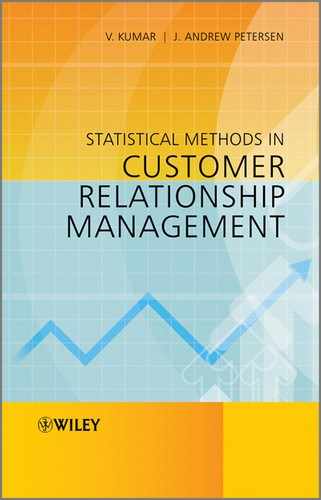9.3 Mobile Marketing
In recent years, mobile marketing has emerged as a new marketing channel for firms to reach out to customers on an individual basis. For marketing managers, this is an effective channel to convey their message to the customers that they want to target. To devise the most effective CRM strategy, it is important for managers to have a good understanding of the key benefits and make the best use of this new communication channel.
Mobile marketing is conducted and communicated through hand-held mobile devices, such as mobile phones, PDAs, smart phones, and portable tablet computers using 3G technologies, such as iPads. Mobile marketing has become a new marketing paradigm because of the superior benefits it offers compared to other communication channels. First, the most important benefit of mobile marketing is that it works even when the intended recipients are on the move. This is not the case with traditional marketing media such as billboards, TV, print, and radio that can only be accessed through certain networks and only from a certain location. Marketers thus can reach out to their customers anytime, anywhere, almost instantly. Mobile platforms therefore provide a fundamentally different type of consumer experience. Second, another interesting feature of mobile marketing is the opt-in feature. The opt-in feature allows customers to indicate their willingness to participate in the call-to-action when they see the firms' advertisement. This feature also enables companies to gather customer information in exchange for special discounts, or privileges in the future. Such a source of customer data provides firms with a quantifiable measure of reach and impact of a marketing program [5]. Finally, through interaction with customers, mobile marketing can be used to collect more contextual and location-based types of data. For example, marketers can determine not only the exact location of a consumer at a given time, but also the context of why that individual might be there. Such pieces of information will be very useful to marketing managers for the purpose of designing and implementing a particular strategy.
Mobile marketing is being implemented by many firms. For example, commuters in Japan can scan their bus schedule with their phones and receive coupons from stores along their routes [6]. Banks such as Standard Chartered and HSBC send out promotional offers to customers through SMS to mobile phones. Also, cellular service providers such as AT&T and T-Mobile are constantly keeping their customers updated with the latest promotions by sending messages to the mobile devices.
Looking ahead, the future of mobile marketing looks promising. Mobile marketing is expected to be used as a complementary, and not an alternative, channel of communication besides the traditional channels such as TV and print. At present, most mobile marketing campaigns involve sending marketing messages to a large group of customers. To increase the effectiveness of mobile marketing in the future, managers can apply the findings provided in the previous chapters in various combinations to target the right individual customers. Adopting mobile marketing in such a manner, in conjunction with other marketing strategies, will multiply the overall effects on firm value. In effect, it will provide significant opportunities for firms to explore ways to enrich the customer–firm relationship. In an effort to bring mobile marketing into the mainstream marketing approach, the following issues will be of interest to marketers and researchers:
- How to measure, manage, and maximize the consumer response rates for a mobile marketing campaign?
- How to integrate mobile marketing methods into the overall brand management strategies of firms?
- How to address the privacy concerns of consumers regarding mobile marketing?
